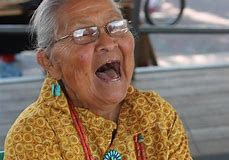Landreaux Iron, a North Dakota Ojibwe Indian, is happily married to Emmaline and raising five children - including the 'adopted' son of his childhood friend Romeo. One day Landreaux - a former alcohol and drug user - is hunting, and accidently kills Dusty, the 5-year-old son of his neighbors Peter and Nola Ravich.
The Ravichs are devastated and Landreaux and Emmaline - hewing to an old Indian custom - make the overwhelmingly heartbreaking decision to give the grieving couple their own young son, LaRose. Nola, though almost insane from grief, is somewhat comforted by LaRose, a sweet boy who - like his namesake ancestors - has shaman-like abilities. Still, both Peter and Nola fantasize about revenge-killing Landreaux.
Meanwhile, Emmaline and Landreaux are torn up by the loss of LaRose and the boy misses his family. Before long Peter Ravich- worried about what this is doing to LaRose - arranges for the youngster to be shared by both families. This arrangement is difficult and does little to heal the rift between the Iron and Ravich parents but it does bring the children of both households closer. Middle-schooler Maggie Ravich, whose disprespectful hijinks cause trouble both at school and at home, bonds with LaRose, who seems able to (somewhat) soothe Nola's anguish. And Josette and Snow Iron take their 'stepsister' Maggie under their wing, encourage her to play volleyball, and give her boyfriend advice when the time comes.
The devastating events of the story put pressure on both the Iron and Ravich marriages as an undercurrent of blame pervades both relationships. To deal with their anguish, the Irons rely on both their Indian heritage and their Catholic faith, guided by rugged ex-Marine priest, Father Travis. Nola, who's close to suicidal also consults the priest, who can do little to soothe her agony.
Interspersed with the story of the current LaRose are historical scenes depicting the life of the original LaRose - an Indian girl sold to an abusive merchant by an alcoholic mother. This first LaRose's story is harrowing but she perseveres (in part) by using her mystical abilities, which are passed on to her descendants. Scenes of a disembodied head following LaRose (and her companion) when she goes on the run are both humorous and disturbing.

The story also depicts Landreaux's childhood, during which he was forced to attend a white-run boarding school meant to erase his Indian culture. At school Landreaux met Romeo, who was intensely loyal until a rift formed between the boys. Romeo, who's partially crippled, grows up to be a drug-using ne'er do well who steals and scams for a living. For various reasons Romeo is jealous and resentful of Landreaux and tries to use 'the real facts' about Dusty's death to destroy him.
The novel has some comic relief when Indian elders living in a nursing home joke with each other (mostly about sex) and get revenge on Romeo for stealing their painkillers. The elders also tell engaging 'creation' tales from their Indian culture, which are fascinating and instructive to young LaRose.

This is an excellent story about grief, remorse, revenge and healing...as well as children's angst as they mature and find their place in the world. The loyalty and love among the Iron and Ravich siblings and step-siblings is very moving and the climax and denouement of the story are believable and satisfying. I would highly recommend this book to fans of literary fiction.
Rating: 4 stars

No comments:
Post a Comment